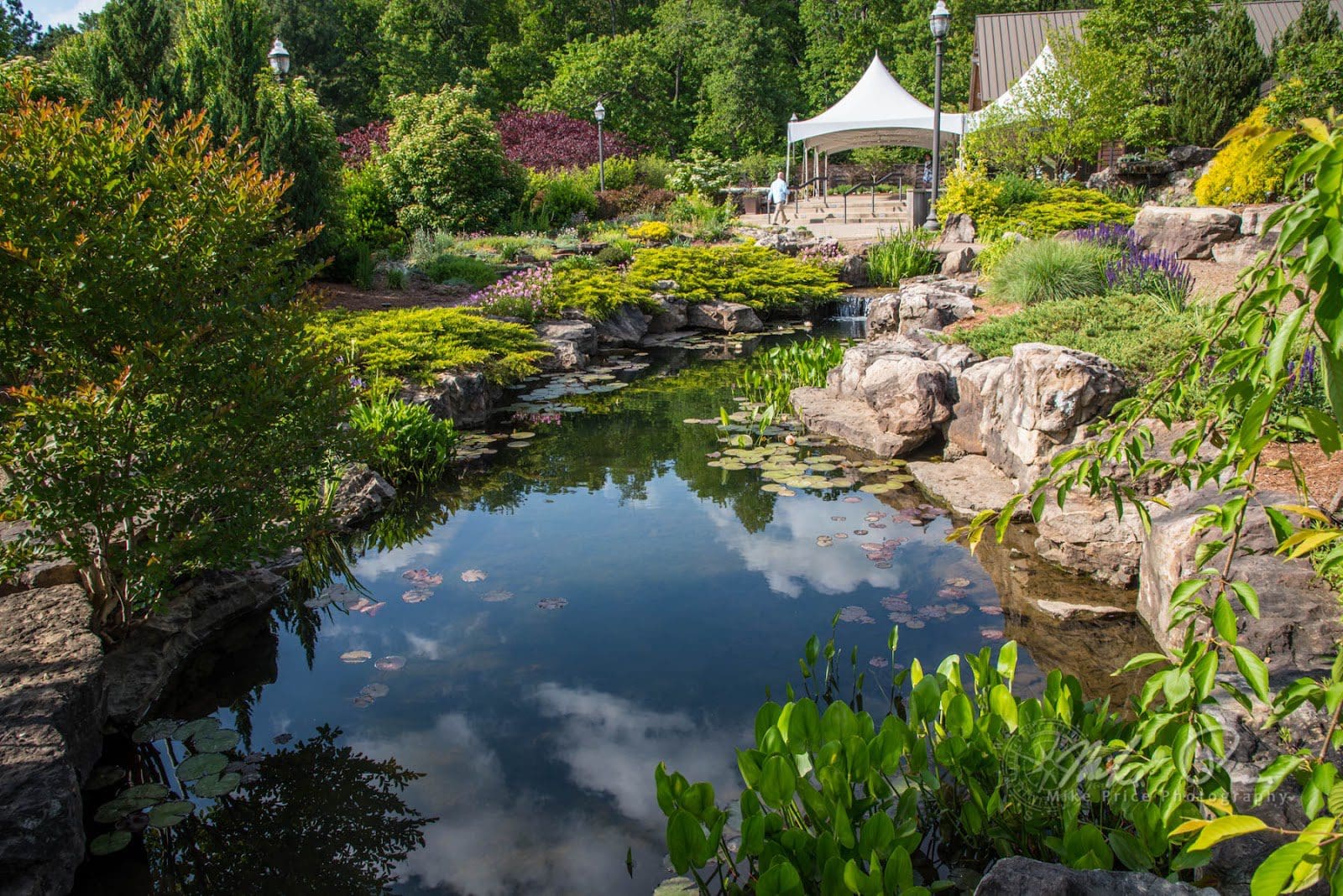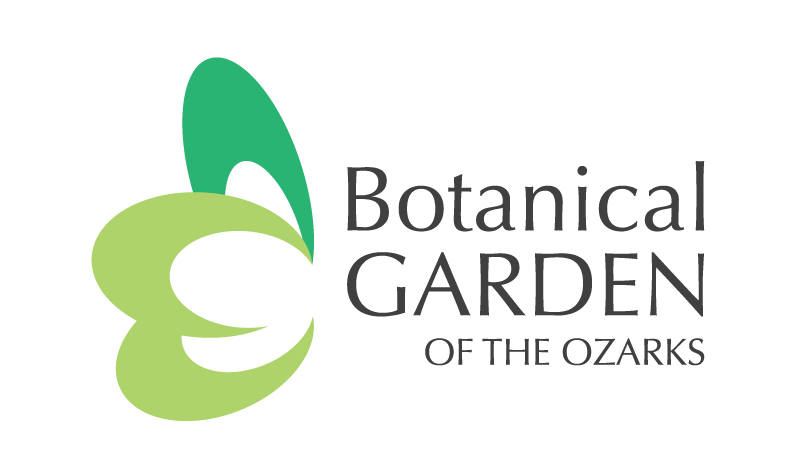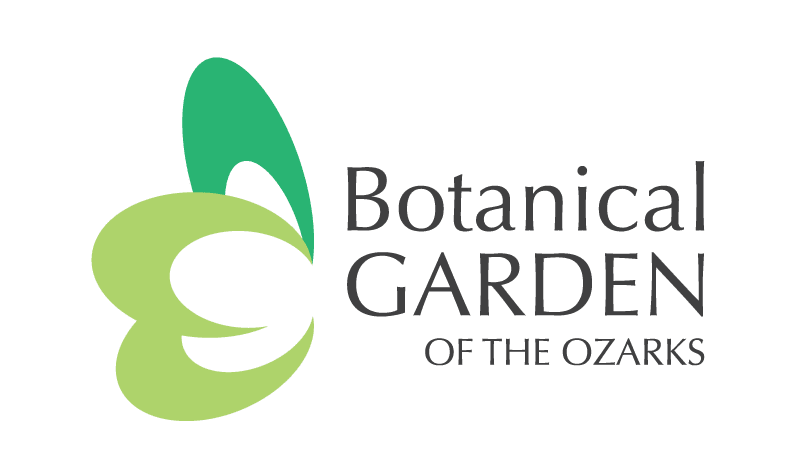Our Gardens
In 2002, Carl Totemeier recommended a concept of nine backyard gardens to the Botanical Garden of the Ozarks’ Board of Directors. These gardens were to serve as examples for designs and plants for use in one’s own backyard.
“We want these gardens to not only reflect the unique character of the Ozarks and its people, but to challenge all who visit to see their own gardens with new eyes and the potential they have for creating more beautiful, useful, and fun spaces around their own homes,” said Gerald Klingaman, former Arkansas Extension Horticulturist and former Operations Director for the BGO.
A contest was held to design these gardens. But, it soon became evident that the winning designs were more elaborate than most people would build in a typical backyard. Subsequently, the gardens on the property became known as “theme gardens,” rather than “backyard gardens.” Once the designs were selected, sponsors were secured to provide funds for their construction.
Today, there are 12 theme gardens on the 8 cultivated acres that make up the Botanical Garden of the Ozarks. We have been fortunate that generous individuals, organizations, and corporations have made these gardens possible. The Botanical Garden of the Ozarks draws more than 70,000 visitors per year who enjoy these gardens in person!
Founders Garden
Japanese Garden
Vegetable & Herb Garden
Children’s Garden
Education Cottage & Gardens
Butteryfly Garden
Four Seasons Garden
Rose & Perennial Garden
Shade Garden
Ozark Native Garden
Sensory Garden
Rock & Water Garden
Founders Garden
Fountain designed by Chandler Harp
Planting design by Susan Regan
The Founders Garden is an outdoor gathering space surrounded by stone planters and benches. The most recognizable feature is the brick path. These bricks are engraved with donors and supporters of the Garden and may be purchased to memorialize and honor loved ones.
The bright color concept in this garden is intended to awaken your mind as you take a minute to meditate on one of the benches with the soft sound of the water feature in the background. This garden features several semi-tropical plants, including Elephant Ears and Cestrum, that survive winter due to the added protection of the mulch, fence, concrete, and building. You can use these elements to create a microclimate to protect your own tropical plants at home.

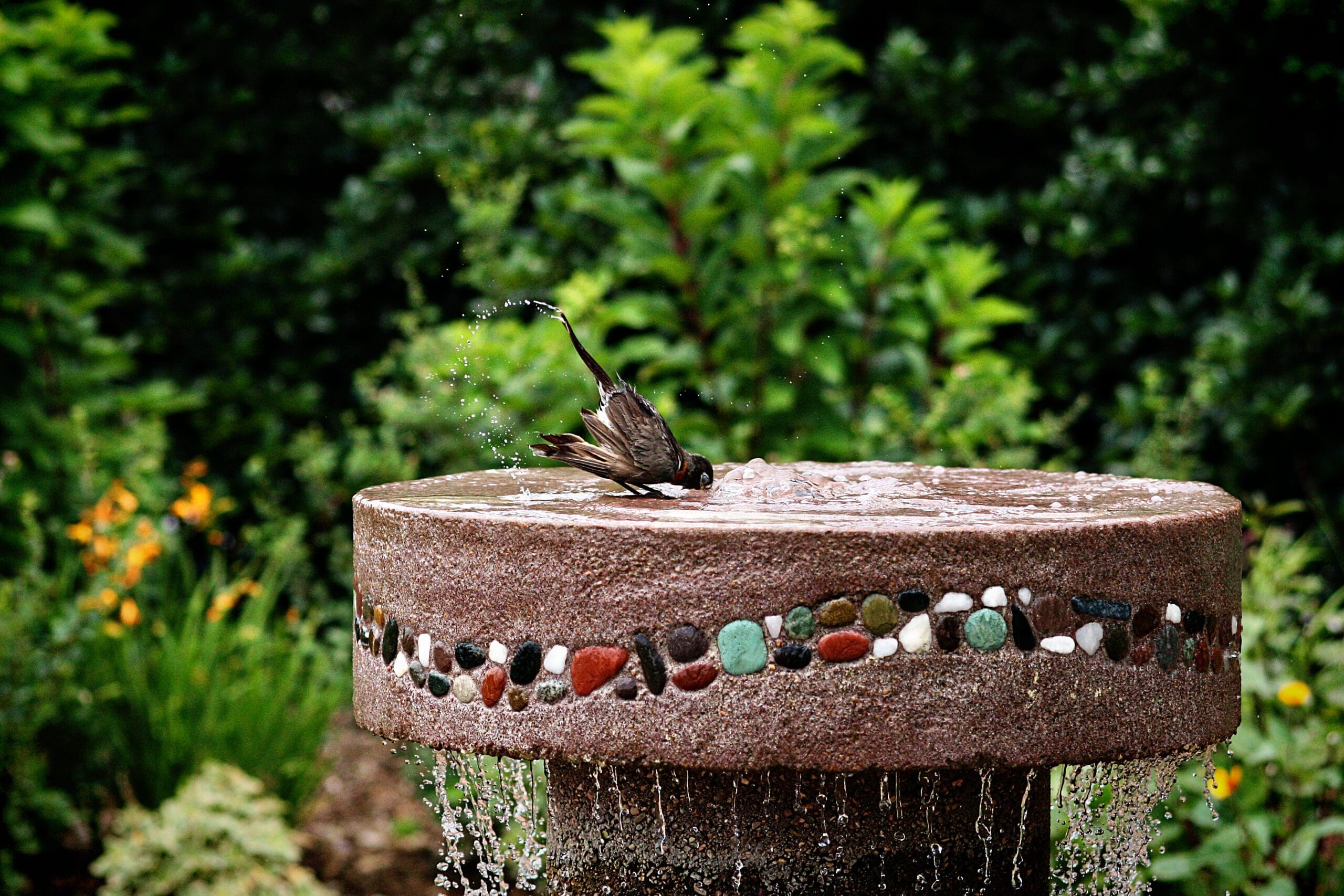
Japanese Garden
Garden designed by Greg Bland
Garden donated by Greg and Hannah Lee
Koi Pond donated by Catherine Wise Bass, Gail Wise Goodrum, and Joyce Wise Brown in memory of their mother, Alpha J. Wise.
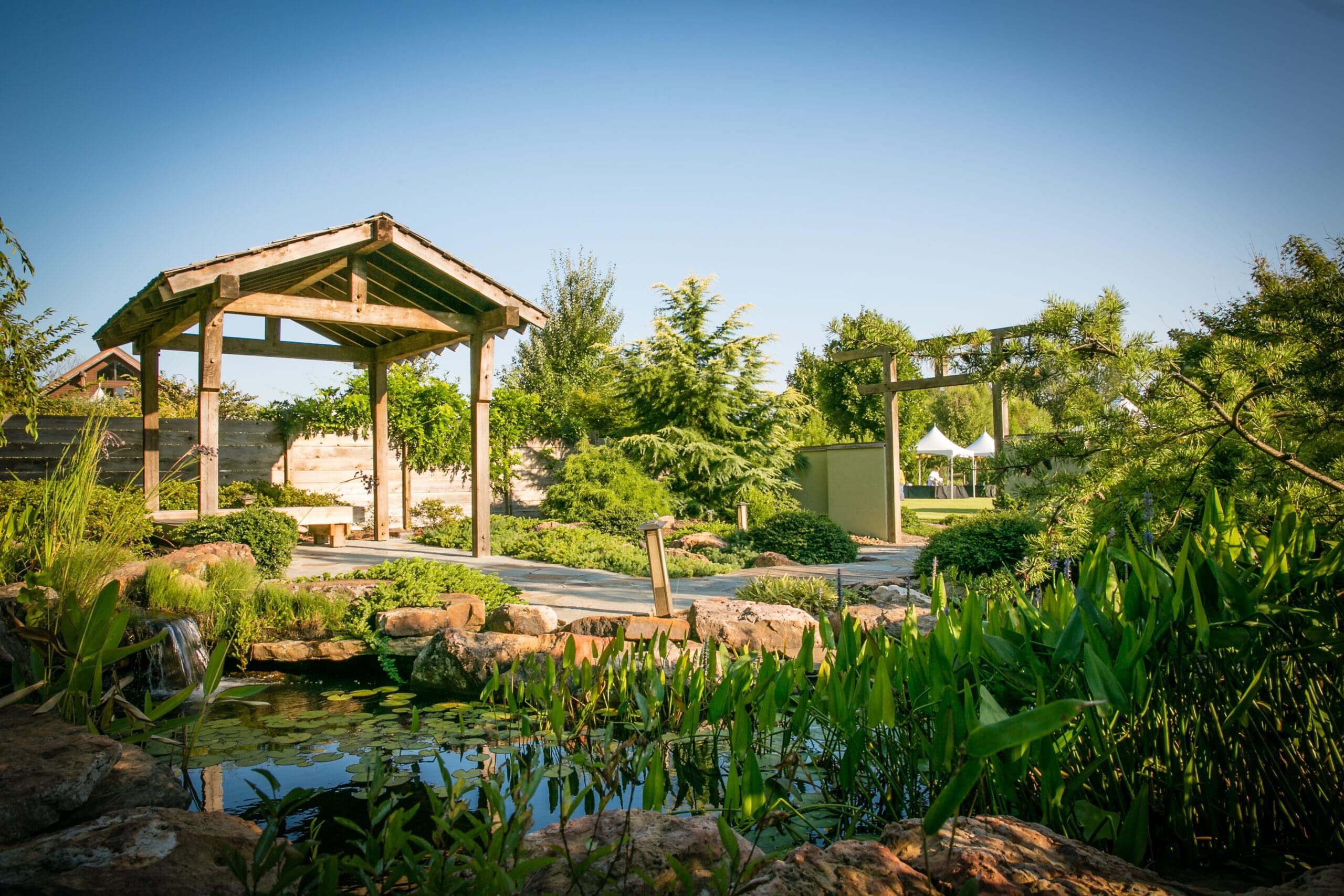
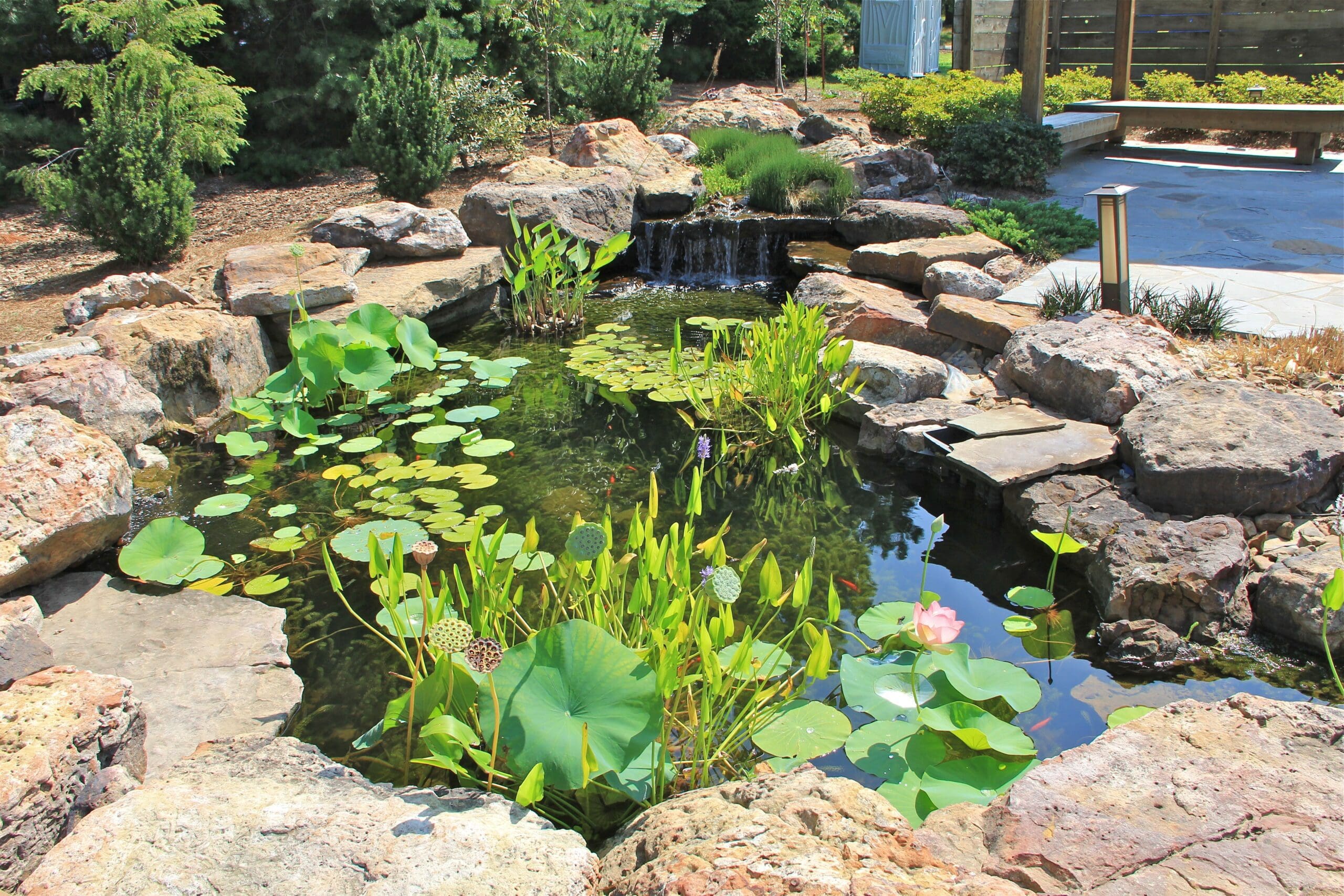
Vegetable & Herb Garden
Garden designed by Stuart Fulbright.
Garden donated by Ed Clement, in memory of his wife Diane, who was an avid herb gardener.
The mosaic fountain, in the form of an ear of corn, was created by Stuart Fulbright and Kathy P. Thompson.
The raised beds were recently updated by a team of volunteers and BGO staff to be more accessible to guests of all mobility ranges, and they are producing more vegetables than ever before! Vegetables grown in the garden are donated to Seeds That Feed, a local organization that distributes it to food insecure people in the community. Any extra waste gets fed to the chickens or composted.
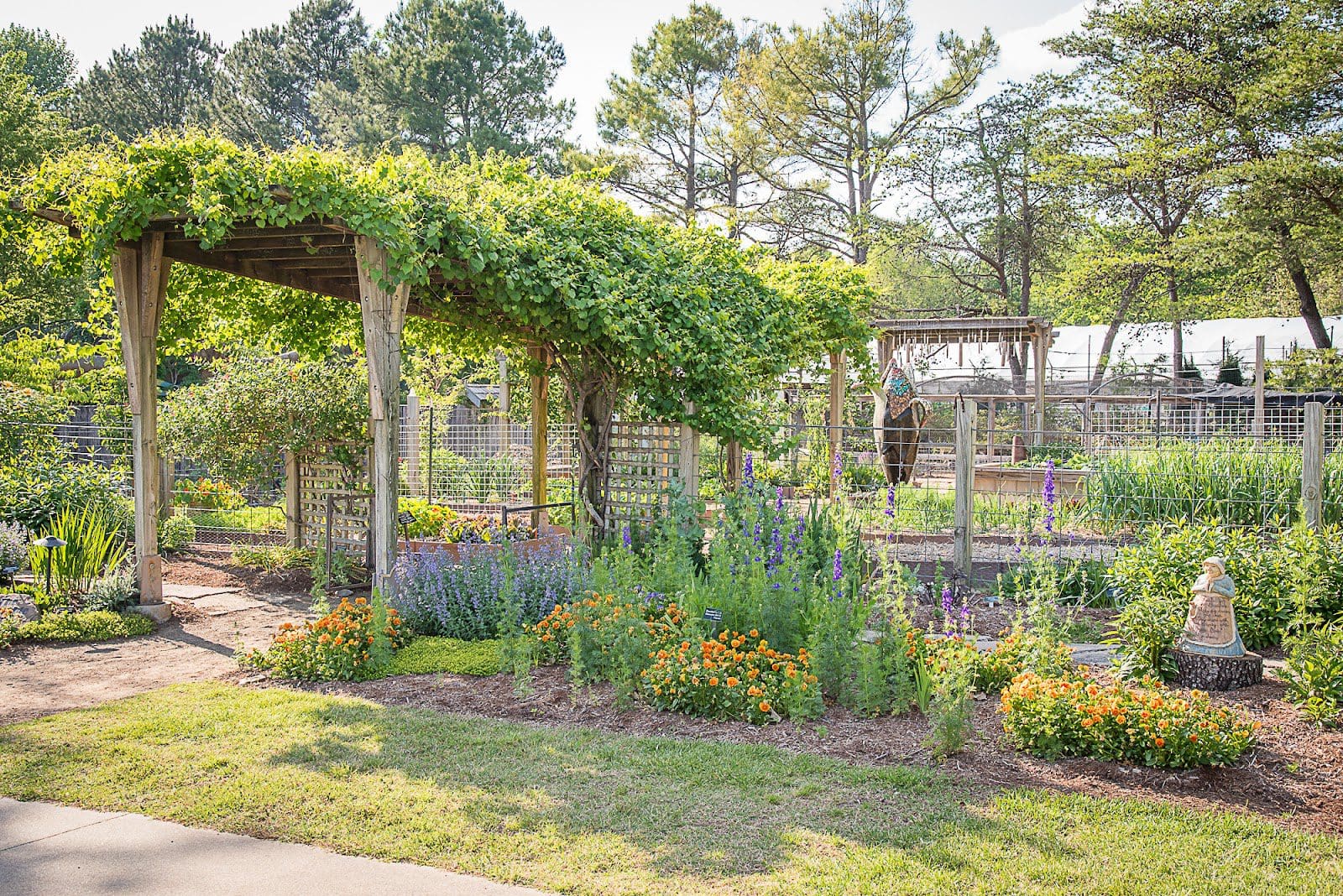
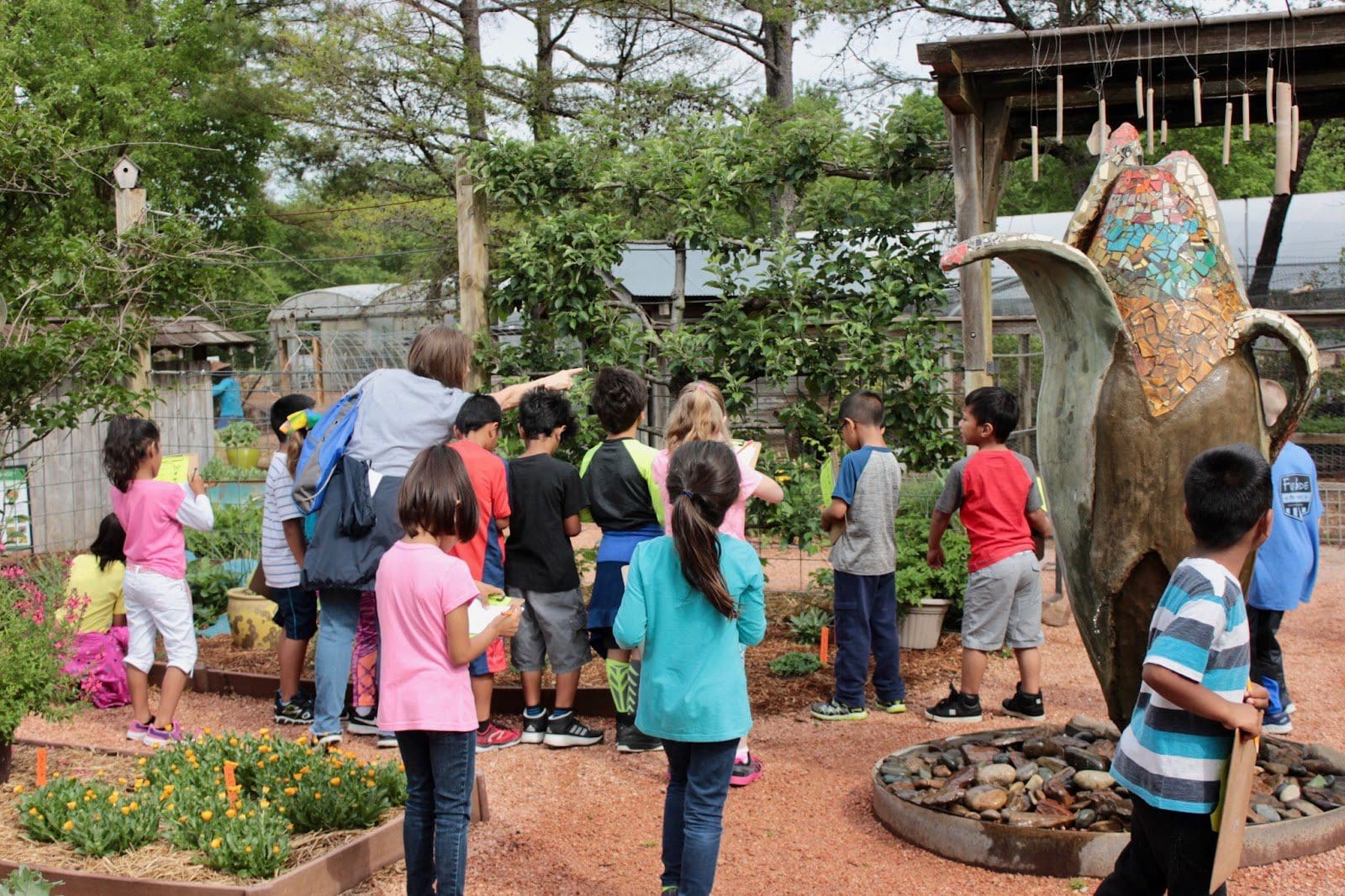
Children’s Garden
Garden designed by Gerald Klingaman, Scott Starr, Cindi Cope, Gail Pianalto, Joyce Mendenhall, and Betty Swope from the original design by Stuart Fulbright.
Gerald Klingaman built most of the structures with his own hands.
Garden donated by Barbara Tyson.


Education Cottage & Gardens
The Education Cottage donated by Mary Bess Mulholland.
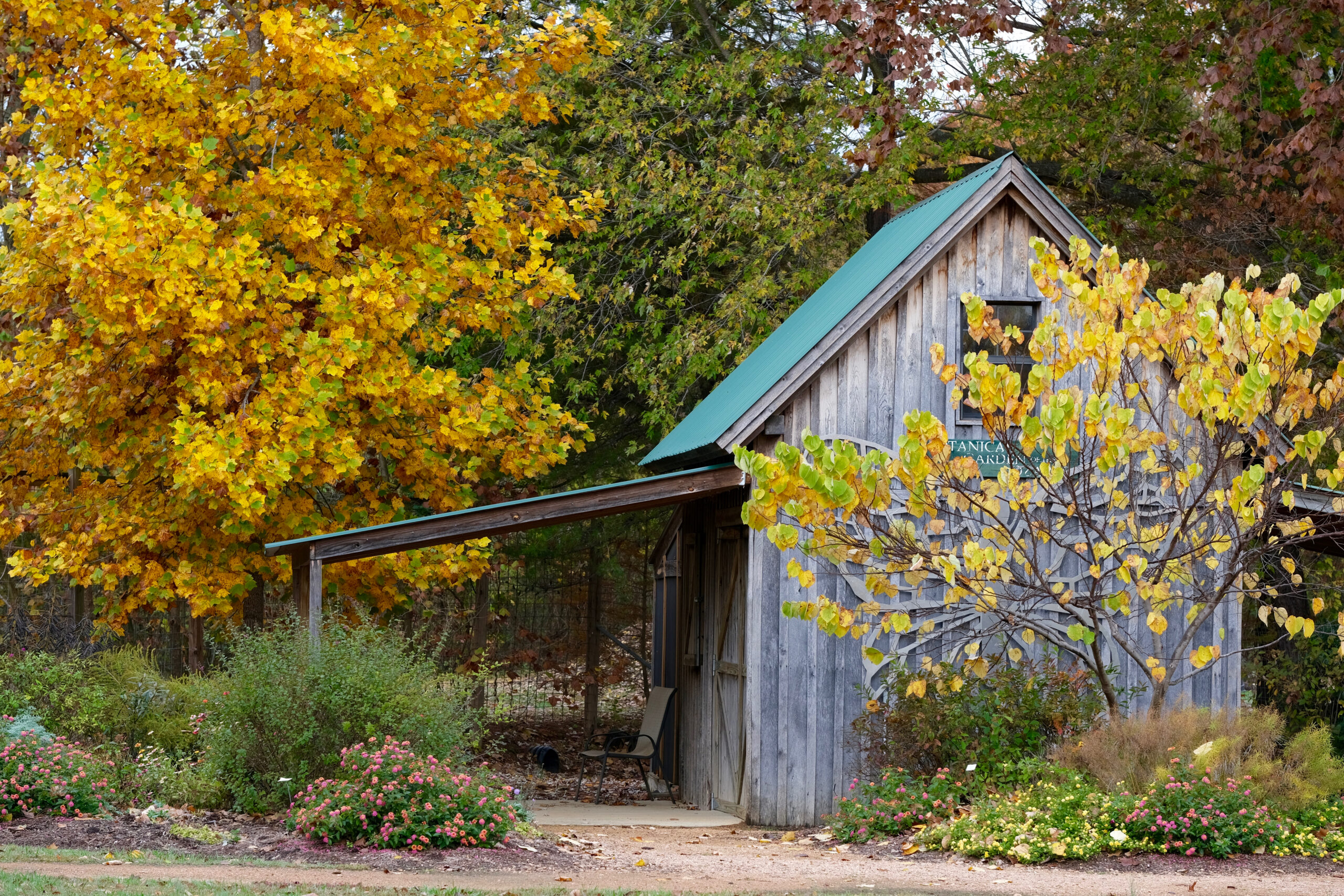
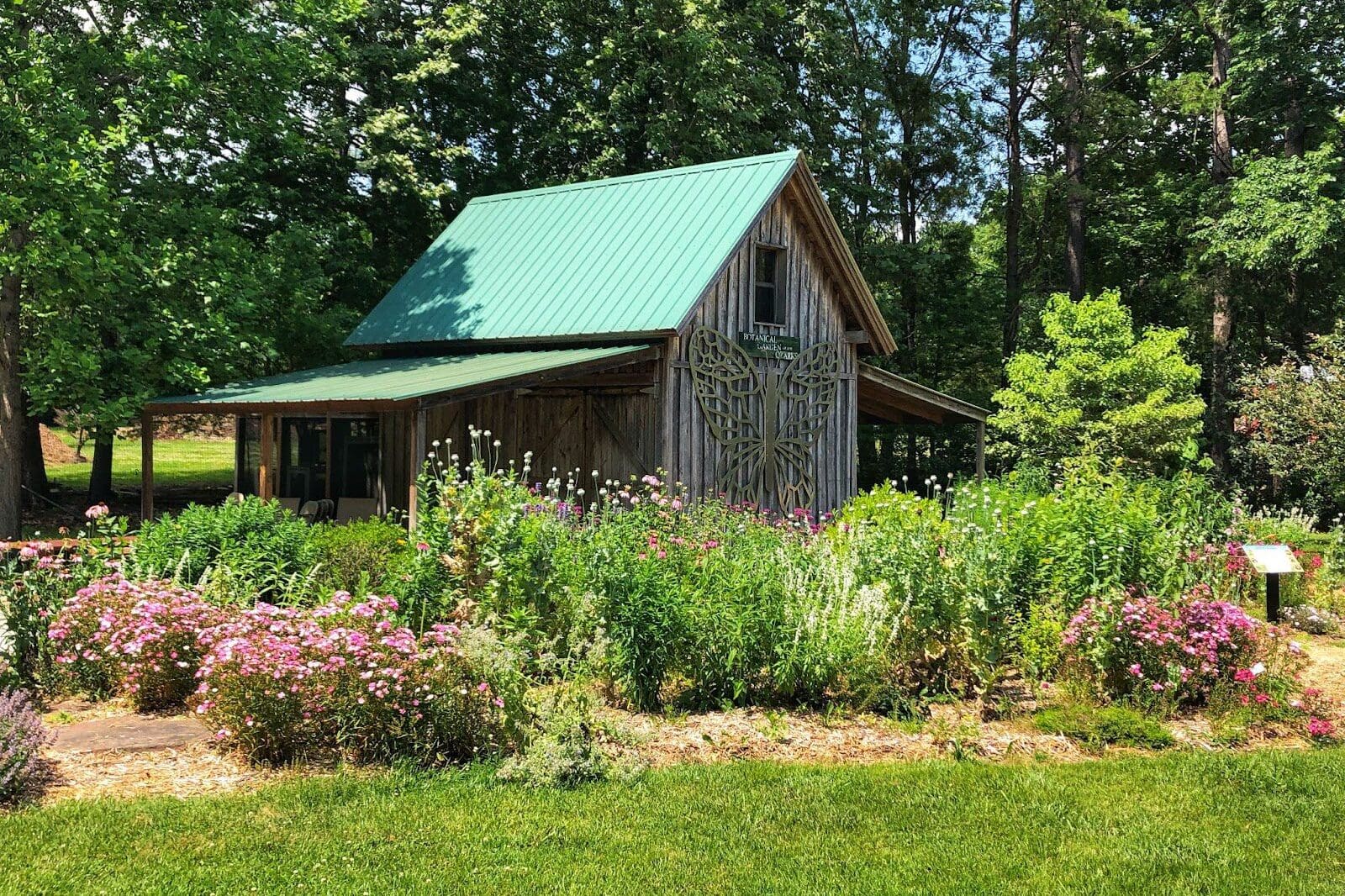
Butterfly Garden
Donated by Paige and Mary Bess Mulhollan and in memory of Will Starr.

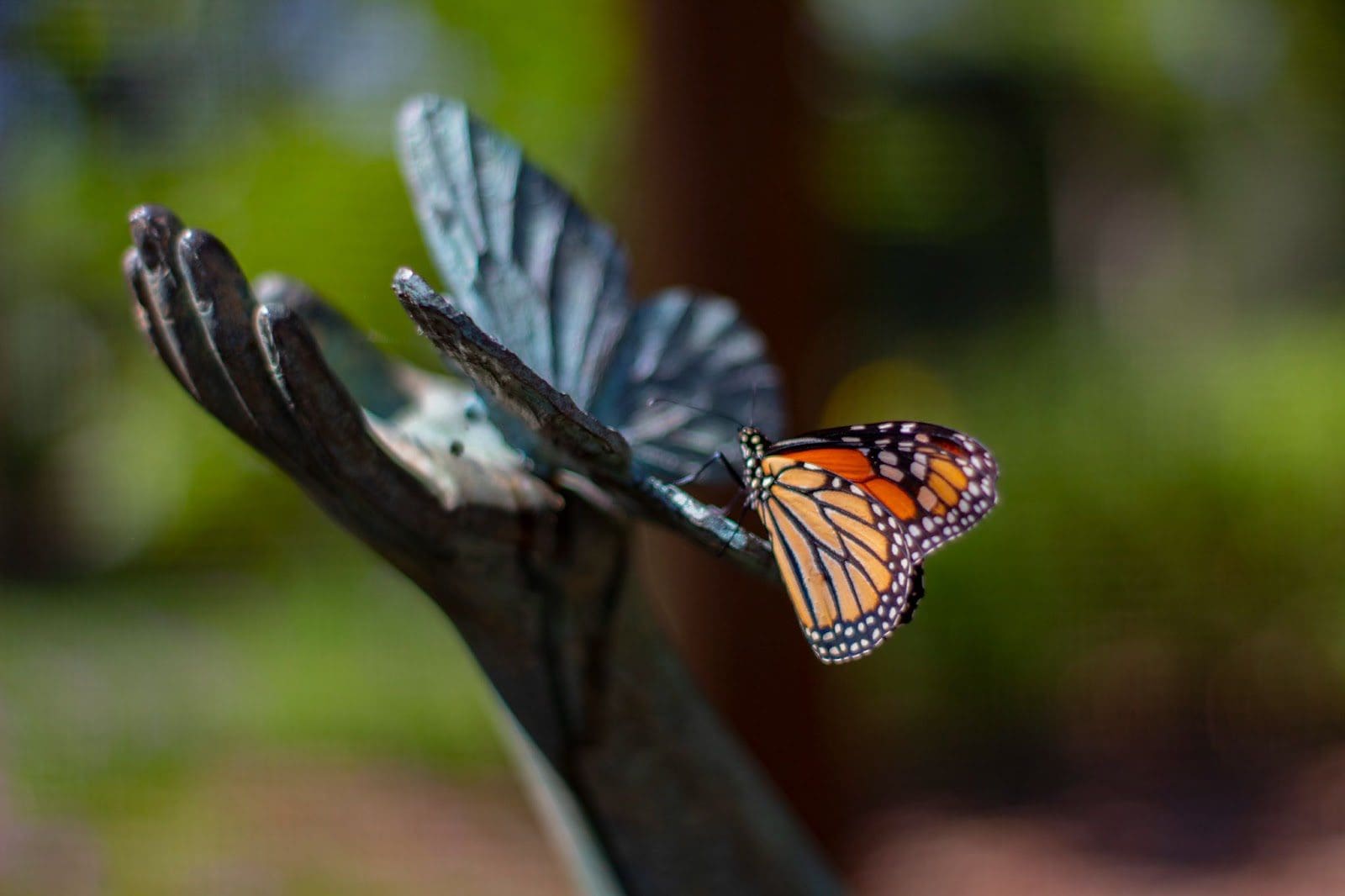
Four Seasons Garden
Garden donated by Walmart & Sam’s Foundation.
Original garden designed by Better Homes & Gardens designer, Kenny Kalke, which was interpreted by a BGO committee.
Stuart Fulbright designed and constructed the “Egg” structure.
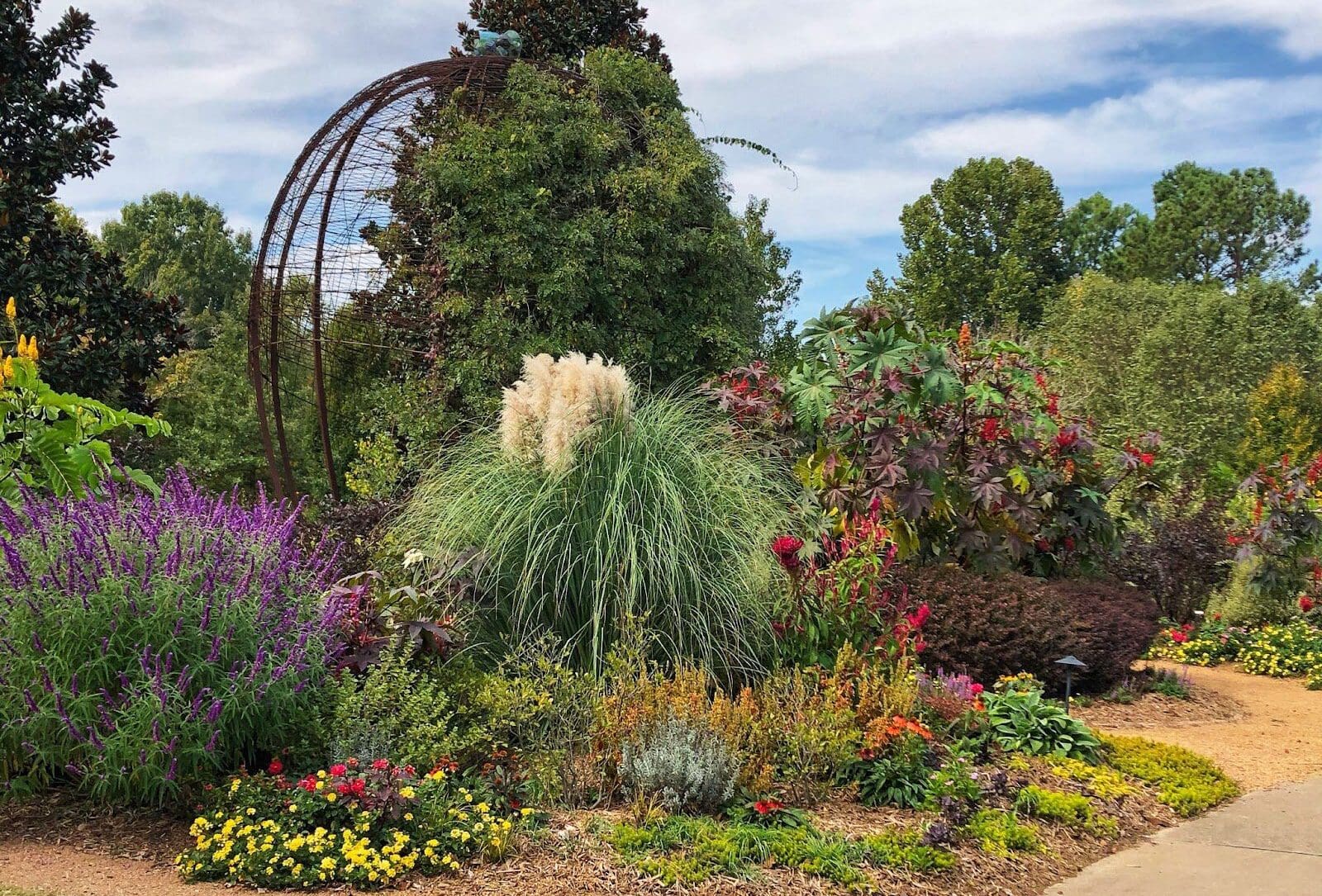

Rose & Perennial Garden
Garden designed by Gail Pianato and Chip Hammons.
Garden donated by the Northside and Downtown Rotary Clubs of Fayetteville.


Shade Garden
Garden designed by Yvonne Kirby.
Garden donated by Jean Totemeier and their daughters, to honor Carl Totemeier for the contributions he made to the BGO and to memorialize his love for the project.
Water feature and granite benches donated by Yvonne Kirby and her husband.
The White Ash tree is the oldest tree on our property, boasting 6 trunks and hosting at least 30 different caterpillar species. Look for the variety of lilies, including the Pineapple Lily, Voodoo Lily, and Toad Lily, as well!
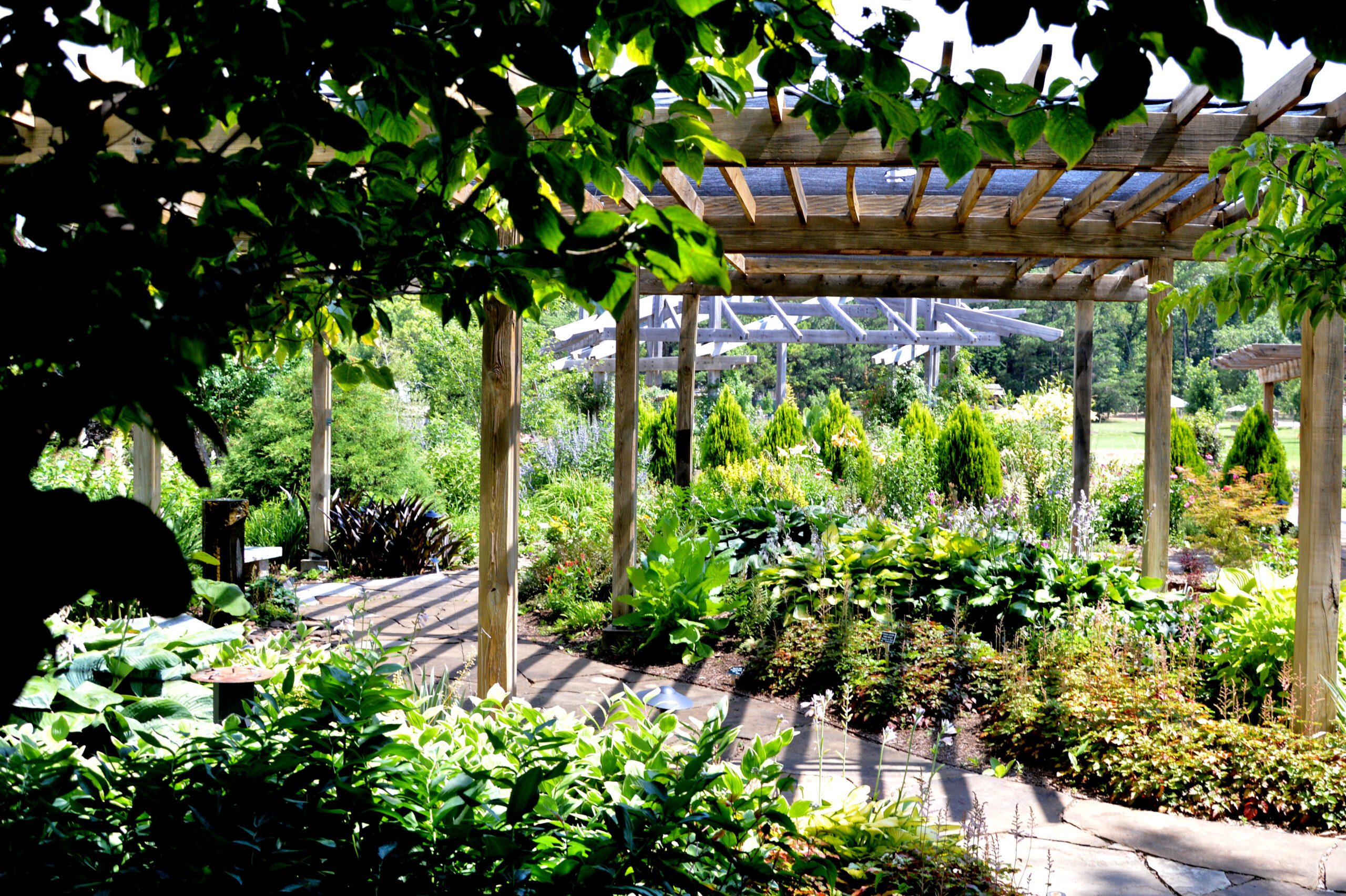

Ozark Native Garden
Garden donated by Paige and Mary Bess Mulhollan. The Mulhollans see this garden as a way of sharing their love of native plants with all who visit.
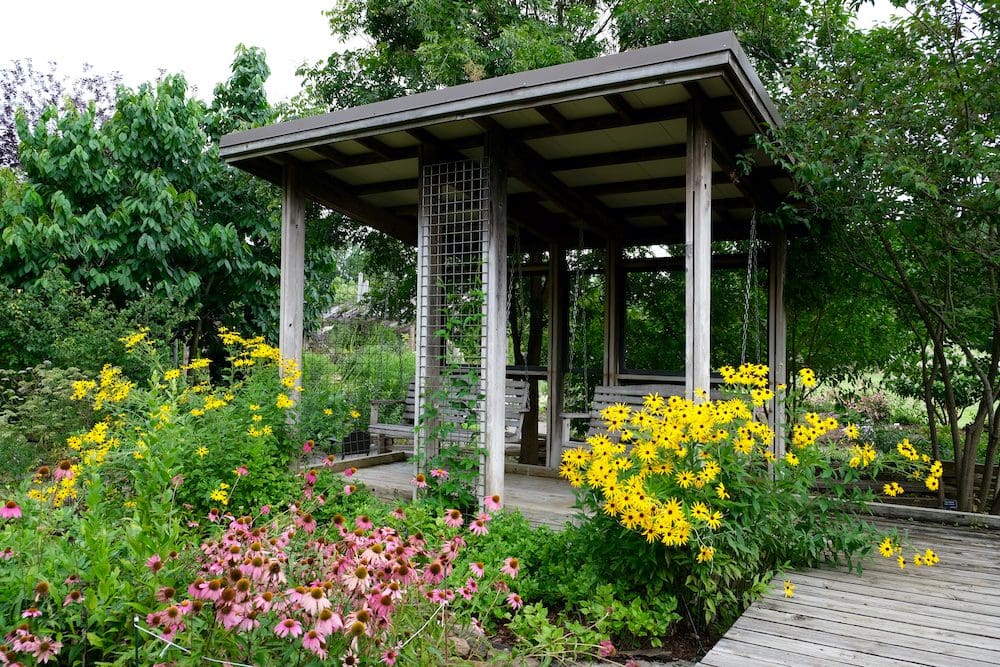
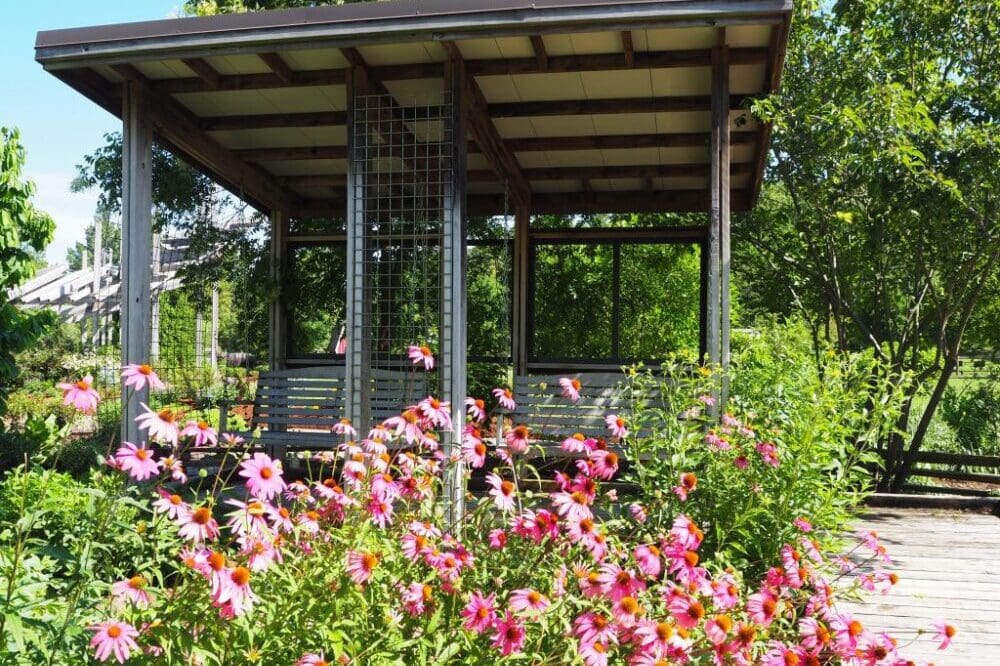
Sensory Garden
Garden designed by Stuart Fulbright.
Garden donated by Washington County Master Gardeners.
Butterfly structure constructed by Stuart Fulbright.
The water feature was created by Fayetteville sculptor Hank Kaminsky in memory of Martha Barton.

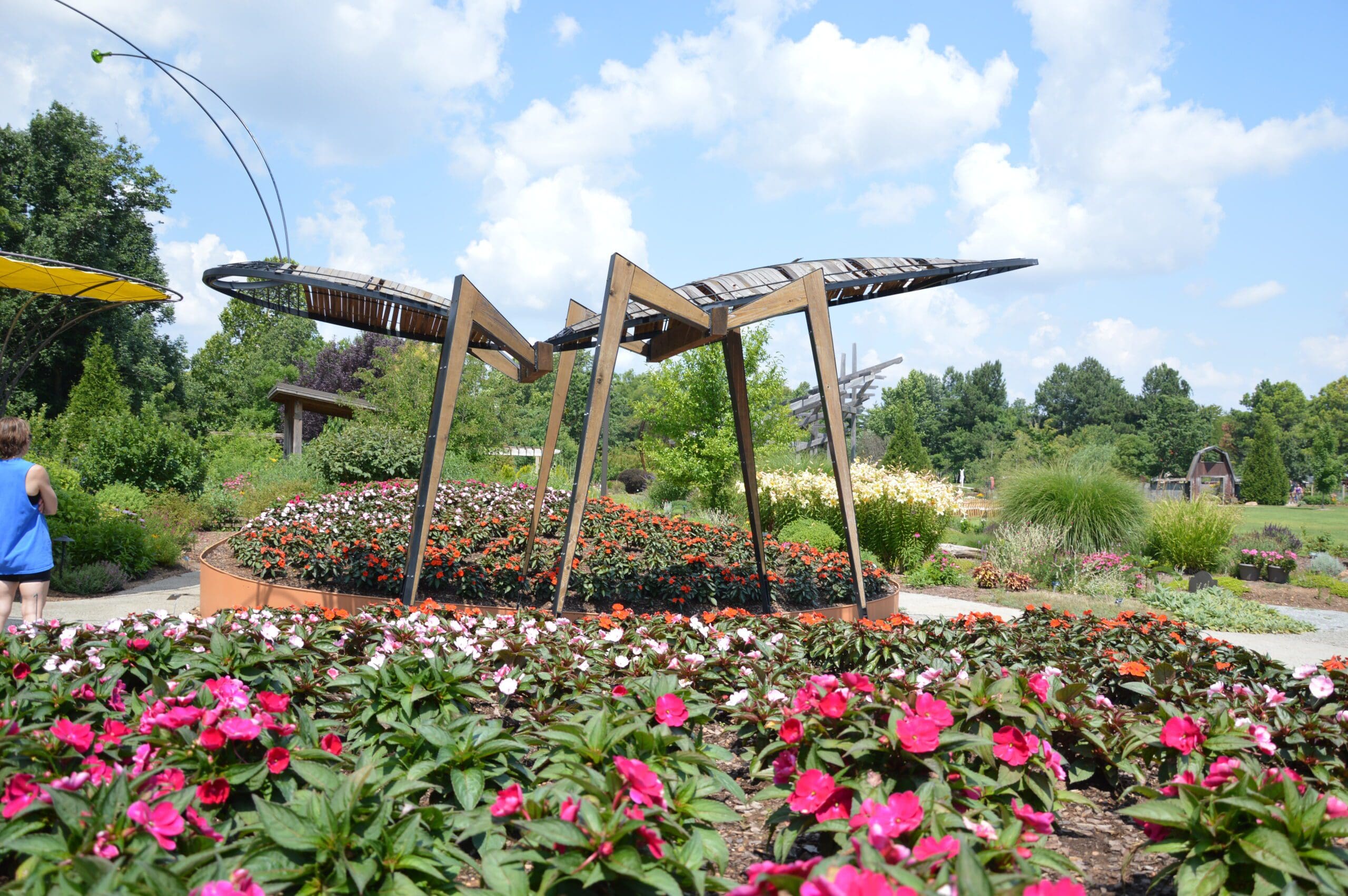
Rock & Water Garden
Garden designed by Gerald Klingaman with support from Mark Robertson and Mike Walker.
Rock garden, Gatehouse, and plantings donated by Denise and Hershey Garner.
Water feature donated by Virgina Coogan.
